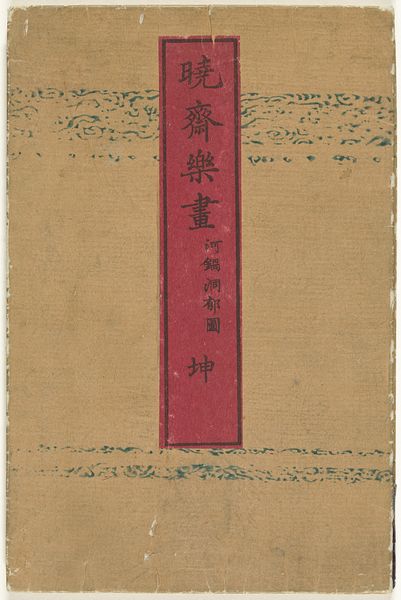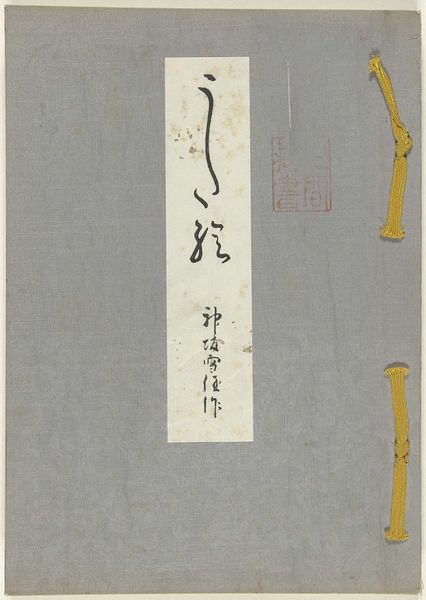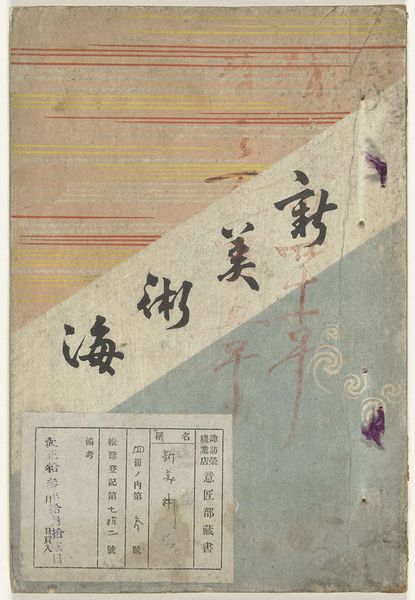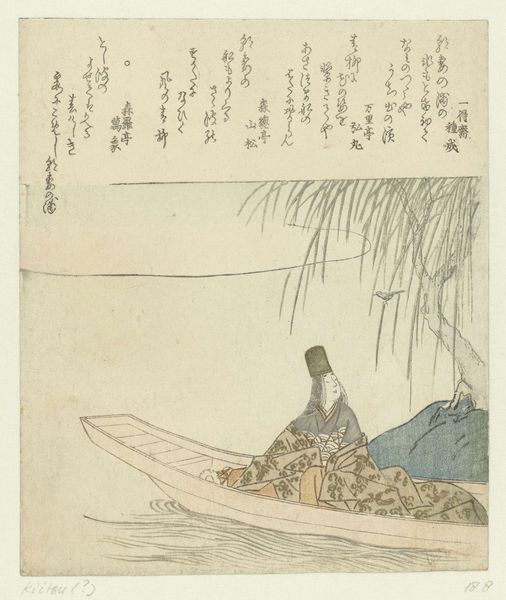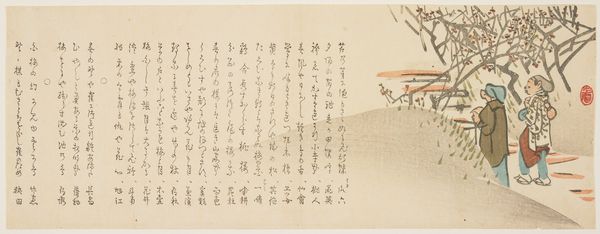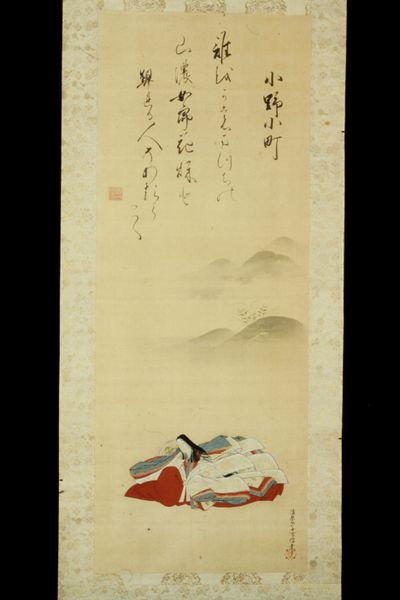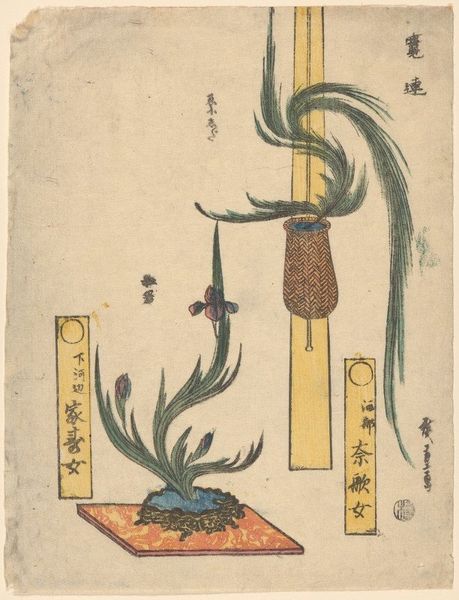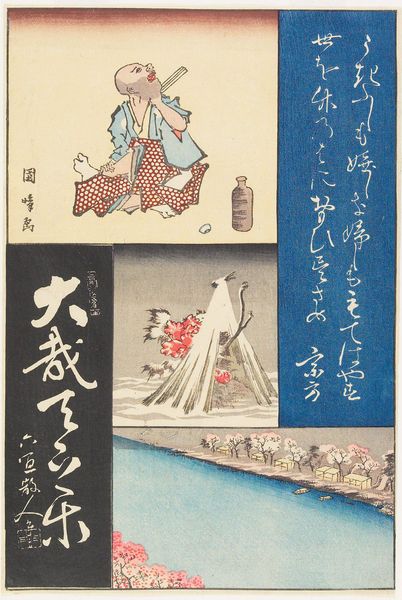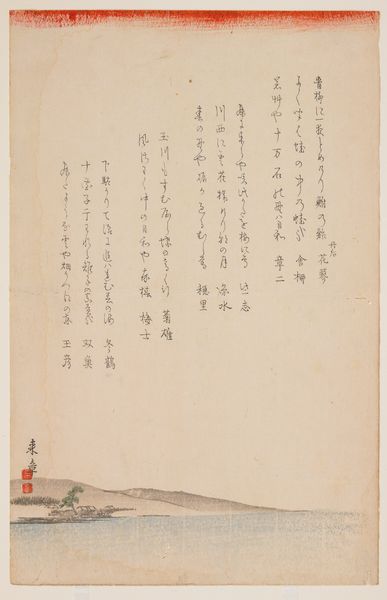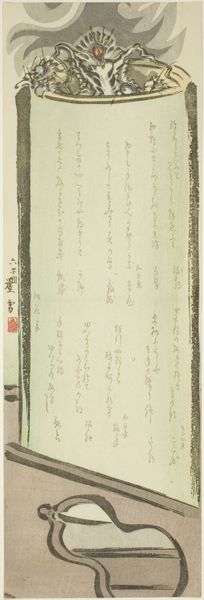
print, paper, watercolor, ink
# print
#
asian-art
#
ukiyo-e
#
paper
#
watercolor
#
ink
Dimensions: 11.6 × 36.7 cm
Copyright: Public Domain
Curator: Standing before us is “Tenman Shrine Bell,” a print made by Nakagawa Rogetsu around the 1860s. It's crafted with ink and watercolor on paper, and currently held here at The Art Institute of Chicago. Editor: My first thought? Dreamlike. It’s mostly soft pastels, and those falling cherry blossoms—it's like a poem caught mid-breath. I’m curious about that bell... what is that bell? Curator: Bells in Shintoism have many layers, typically functioning as a locus to call the divine or to remove malevolent forces, which sounds rather dramatic! But there are some who might suggest it serves more pedestrian functions such as indicating the presence of a sacred space and warding off unwelcome intrusions, whether that be a stray animal, bad intentions, or uncleanliness. And shrines dedicated to Tenman, who is considered the god of scholarship, suggest devotion and auspicious wishes for intellectual attainment. Editor: Oh, I love that it wards off the unclean—both literally and symbolically. And thinking about Tenman, the god of scholarship... seeing those cherry blossoms with the calligraphy, it's as if knowledge itself is falling, like the petals, waiting to be gathered. Curator: Consider how these floating blossoms contribute to ukiyo-e art, offering ephemeral beauty. Ukiyo-e, with its roots in the fleeting moments of everyday life and pleasure, often incorporates elements suggesting cycles of transformation: cherry blossoms being such powerful signsifiers as they’re intrinsically transient. How their fleeting beauty mirror our aspirations, hopes, even intellectual pursuits? Editor: It’s all rather moving when you see that symbolism right there. And seeing that bell, too, with the six-petal design... Does that particular image have significance beyond decoration? Curator: Most likely, yes. Considering its presence on the bell suggests direct engagement with divine association. Bells, especially, mark boundaries, bridging earthly spaces with spiritual domains. Consider that its function being directly tied to calling upon celestial powers, especially at temples! Editor: Makes you think about the role of art in making those connections tangible, doesn't it? We get to participate in something bigger, some ongoing dialogue. It's really so beautiful and peaceful! Curator: The artist has succeeded if we ourselves have felt even a little bit connected to that cultural continuity. Thanks for musing along. Editor: Yes, it was great reflecting together on this lovely little artwork.
Comments
No comments
Be the first to comment and join the conversation on the ultimate creative platform.
